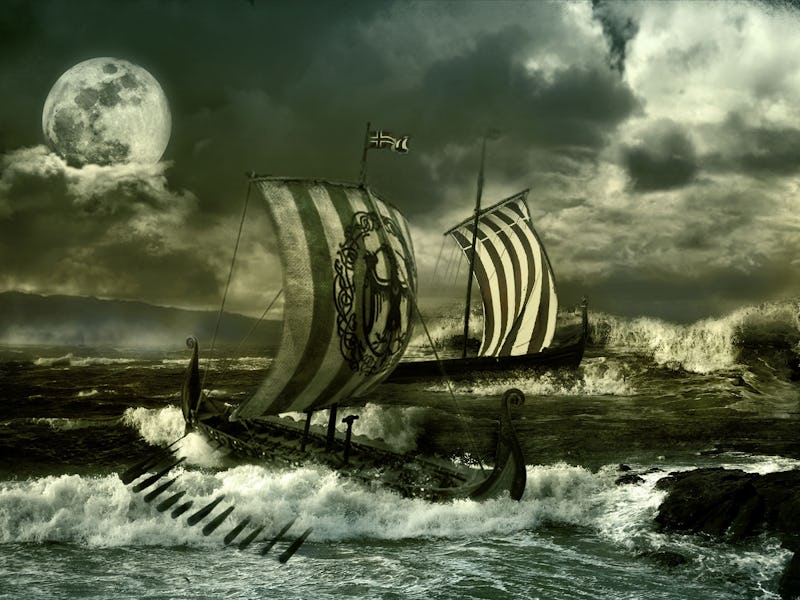Ancient Vikings Used Crystals to Navigate in a Surprisingly Legitimate Way
Sunstones are unexpectedly accurate natural compasses.

For hundreds of years, Vikings were the masters of the seas, controlling the northern Atlantic and venturing as far as North America and the Middle East. From about 900 to 1,200 CE, these explorers and warriors managed to voyage beyond their fjords without magnetic compasses. Instead, they relied on sundials and, according to Norse legend and a study published Wednesday, crystals, which allowed them to orient themselves to the sun, even on a cloudy day.
The problem is that no crystals — technically known as sunstones — have actually been found on or around a Viking shipwreck. That just leaves researchers with passed-down stories and a hunch that sunstones really could be used to guide fleets. However, in a paper released Wednesday in Royal Society Open Science, a team of biological physicists show using computer simulations that it is possible to use sunstones to navigate, especially if the sunstone is a cordierite crystal. If a seafarer oriented their ship to a cordierite crystal every three hours, they say, they’d have a 92 to 100 percent chance of getting where they want to go.
This "Iceland spar" is another type of sunstone researchers hypothesize vikings use.
“Our results show that the sky-polarimetric navigation is surprisingly successful on both days of the spring equinox and summer solstice even under cloudy conditions if the navigator determined the north direction periodically at least once every three hours,” write Dénes Szás, Ph.D., and Gábor Horváth, Ph.D., both of Eötvös Loránd University in Hungary. “This explains why the Vikings could rule the Atlantic Ocean for 300 years and could reach North America without a magnetic compass.”
Szás and Horváth designed a computer model that allowed them to simulate 1,000 three-week voyages between Norway and Greenland. These simulations contained varying levels of cloudiness and either included the spring equinox or the summer solstice. The ships in these trials were equipped with different types of crystals exposed to the cloud-covered sun: calcite, cordierite, or tourmaline. Previous research already established that these crystals could split a beam of light that hits it. Hypothetically, one can examine the brightness of the beams to visualize the polarized rings around the sun, which in turn demonstrates where it is oriented in the sky.
While the calcite and tourmaline revealed mixed results, the use of cordierite to track the sun between Norway and Greenland resulted in accurate passage 91 to 100 percent of the time. Rotating a cordierite crystal against the sky, they explain, picks up the rings of polarized light around the sun created by atmospheric particles. Just as spiders, crickets, and bees use light polarization to determine where the sun is, the Vikings might have done so as well. By constantly checking where the sun was, they gained a sense of where there ship was in the sea.
The study authors told the New York Times that they now want to take this research a step further and use sunstones themselves to navigate during a gray-skyed sail. Ten volunteers tried this out too, during a 2016 experiment, and accurately got where they intended just 48 percent of the time. But then again, they weren’t actually Vikings.